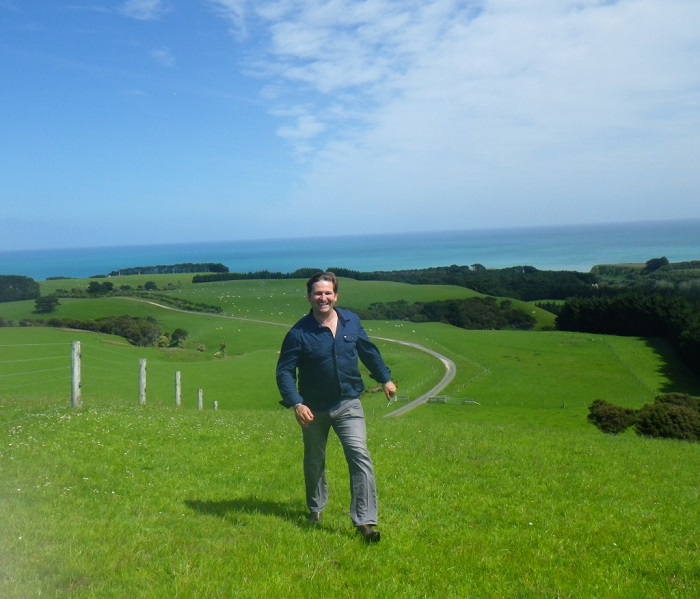New Zealand’s sheep worth meeting

Nic DeLange welcomes us to his 5,500 acre country estate Wharekauhau, about two hours from Wellington, New Zealand.His sheep are the white dots in the background.
New Zealand’s merino wool was one of my quests when I visited New Zealand a few years ago. I’d received some merino wool long johns the previous Christmas and, looking at the label, I discovered a BAAA code – a website that allowed me to trace the ancestry of the sheep from which my snuggly long johns had been made.
I keyed in the maker’s website www. icebreaker.com and discovered they’d come from Castle Ridge on New Zealand’s South Island. The country’s South Island was not on my itinerary for the conference that took me there, but I was able to visit Wharekaubau, a 5,500 acre country estate about two hours from Wellington during my week long visit
I also discovered an Icebreaker shop at the airport in Auckland, so I was able to stock up for future Ohio winters.
On this New Zealand visit I learned that the clever kiwis are combining merino yarn with that of a pest, the bushy tailed possum, to make an even more luxurious fiber garment. It’s a great solution since these tree dwelling possums eat their weight and more in vegetation and have no enemies except man on this island nation. Unless controlled they stand to wipe out much of New Zealand’s crops. The possums there are nothing like ours and have big bushy tails much like our raccoons. The merino-possum garments I found were well outside my price range, however.
Like most Americans, I’d heard that sheep far outnumber people in New Zealand, so before I took this trip I arranged a visit to a sheep farm – one that also takes guests. I later learned that the sheep population has declined despite the great garments and delicious New Zealand lamb exported from the country. Sheep may have declined, but they still outnumber people with a ratio of seven to one and are seen peacefully grazing everywhere.
My visit took place in New Zealand’s November springtime and the sheep were ready to be shorn, to rid them of the heavy coat of fleece they’d acquired over the winter. Wharekaubau owner Nico DeLange escorted our group to the sheep shearing shed where his crew of workers was already busy shearing the sheep. Most were tattooed Maori natives and each man would shear 400 sheep a day, he told us. It was a fascinating visit.




Recent Comments